Italy is one of the most beautiful countries in Europe. Although its main attraction lies in its access to the Mediterranean Sea, the country is also home to some of the best mountains in Europe. The northern regions are a popular tourist attraction because of the Alps and Dolomites.
These mountains aren’t only a hotspot for winter tourism — they also have many natural water springs. And, since they’re impenetrable, these springs are mostly safe from human intervention and industrial activities.
This is one of the main reasons why Italy has some of the best bottled spring and mineral water brands.
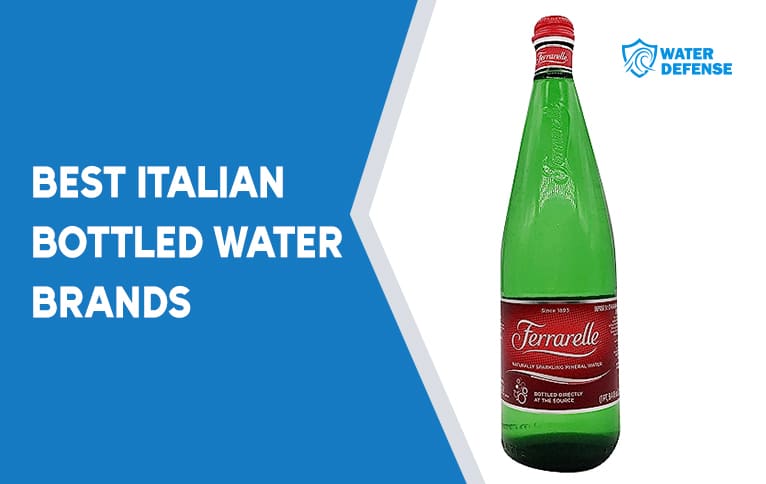
Italy Mineral Water Comparison Chart
| Italy Water brand | Type | TDS | pH |
|---|---|---|---|
| Acqua Panna | Spring water | 188 mg/L | 8.8 |
| San Pellegrino | Mineral water | 1779 mg/L | 5.6 |
| Lauretana | Spring water | 14 mg/L | 6 |
| Cedea | Spring water | 130 mg/L | 8.1 |
| Ferrarelle | Spring water | 1,315 mg/L | 6 |
What are the Best Italian Bottled Water Brands?
Acqua Panna
Not only is Acqua Panna the best Italian bottled water brand, it also ranks top as one of the best bottled water brands globally. Acqua Panna water is a favorite that graces the tables of many fancy restaurants and occupies the top supermarket shelves worldwide.
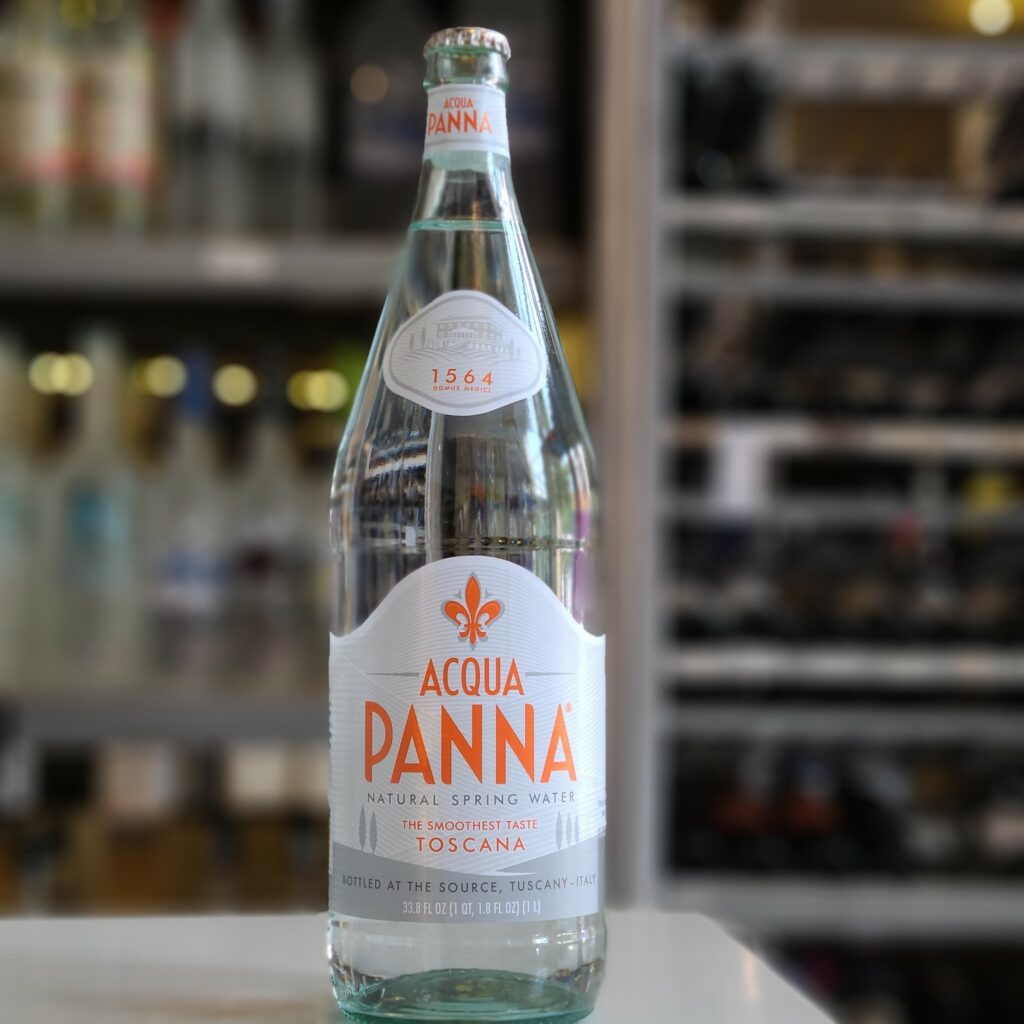
Acqua Panna owes its success to its sweet savor, velvety texture, and alkaline nature, all of which stem from the water’s balanced mineral makeup.
The water is sourced from Acqua Panna spring, which is located on the Tuscanian foothills. The journey the water makes before emerging in these foothills entails mineral-rich underground rocks that provide natural filtration. So, when the water appears on the surface, it’s free of impurities and rich in minerals.
When bottled, the Acqua Panna water has a total dissolved solids (TDS) level of 188 mg/L, with calcium, magnesium, potassium, and sodium minerals ranging between 1 mg/L and 30 mg/L. The water also has a pH of 8.8, which makes it one of the most preferred alkaline spring water brands.
Lastly, the discovery of the Acqua Panna spring dates back to the sixteenth century, and the locals have been drinking this water ever since. The water is also well protected from human and animal contamination and industrial and agricultural practices.
San Pellegrino
San Pellegrino’s popularity speaks for itself, as the water is distributed to 120 countries around the globe, and is touted as one of the best mineral water brands. Its popularity is deserved, too, as San Pellegrino is one of the most digestive-friendly mineral water brands.
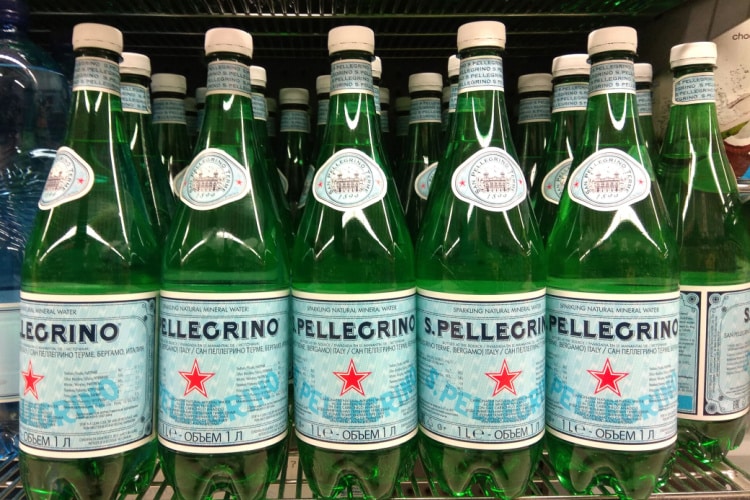
The spring that the brand sources its water from is located at San Pellegrino Terme, Val Brembana. This territory is in a valley on the foothills of the Italian Alps, and the spring water is actually snowmelt that travels from the peak of the Alps to the spring.
During its travel, the water passes through dolomite rocks with natural cleansing properties and abundant minerals. So, when the water emerges in its spring, it has no impurities, only healthy minerals.
Bicarbonates and sulfates are the minerals most present in its mineral makeup, at 1,109 mg/L and 410 mg/L, respectively. These minerals are why San Pellegrino helps with digestion.
In addition, the water is rich in calcium (160 mg/L), magnesium (53 mg/L), and chloride (47 mg/L). Unlike Acqua Panna, though, San Pellegrino is naturally carbonated and sparkling, and when bottled, it has a pH of 5.6, which makes it one of the most acidic bottled water brands.
Lastly, it has a refreshingly crisp taste, which makes it a great companion to heavy dishes and white wine.
Lauretana
Acqua Panna and San Pellegrino have relatively high mineral counts compared to standard drinking water. If that’s not your cup of tea, fortunately, there are Italian geological formations that produce spring water with low TDS. Lauretana, the purest Italian spring water brand, is proof of that.
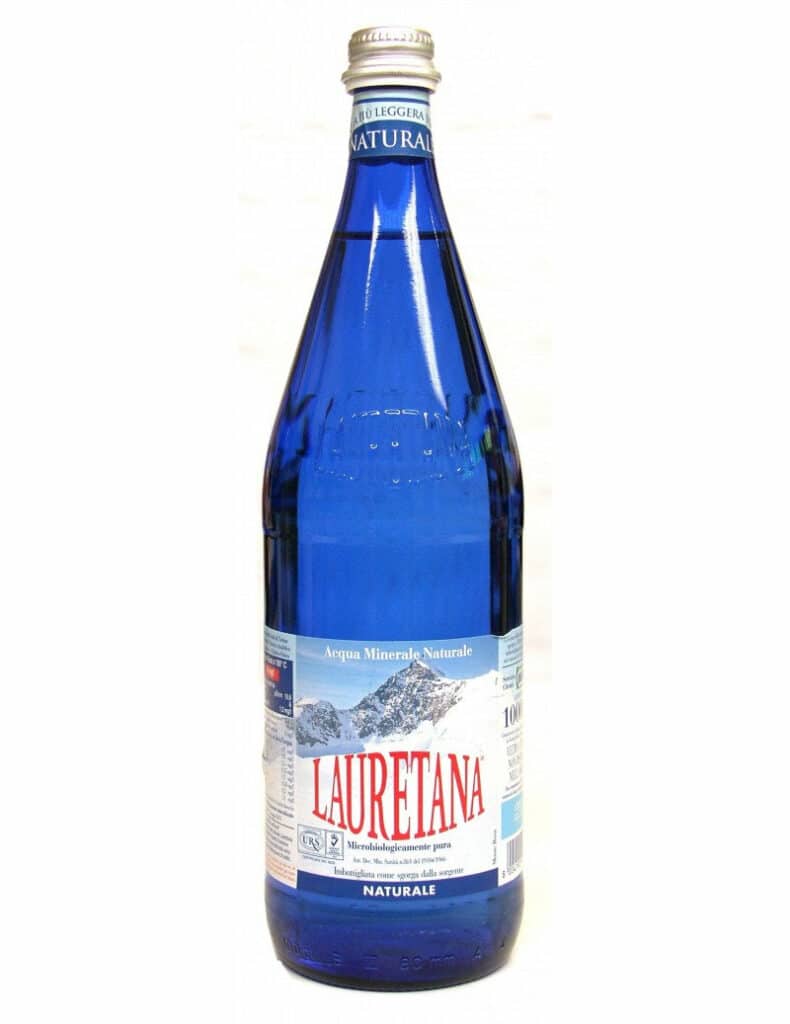
The water of the Lauretana spring originates from the Monte Rosa glaciers, one of the highest points of the Italian Alps. The brand sources its water at 1,000 meters (3,280 feet) above sea level in unpolluted areas.
Massive granite rocks absorb the potential impurities from Lauretana water during its journey and protect its organoleptic qualities. These rocks also have a very low mineral content, so the water emerges in the spring with only 14 mg/L of total dissolved solids.
The end product has only trace amounts of most mineral salts. The only mineral worth reporting is silica, with 4.1 mg/L levels. As silica is known for giving the water a sweet taste and smooth texture, it only adds to Lauretana’s organoleptic quality.
The water is also sodium-free, meaning people on low- or no-sodium diets (typically because of cardiac conditions) can drink it with peace of mind.
Lauretana has a natural pH value of 6, which puts it on the acidic side of the pH scale.
Cedea
The Italian Alps don’t have a uniform geological formation; some consist of glaciers, some from granites, and some from dolomites. In fact, dolomites are so prevalent in some spots that the northeast part of the Italian Alps is called the Dolomite Mountains. Cedea is sourced at the heart of the Dolomites.
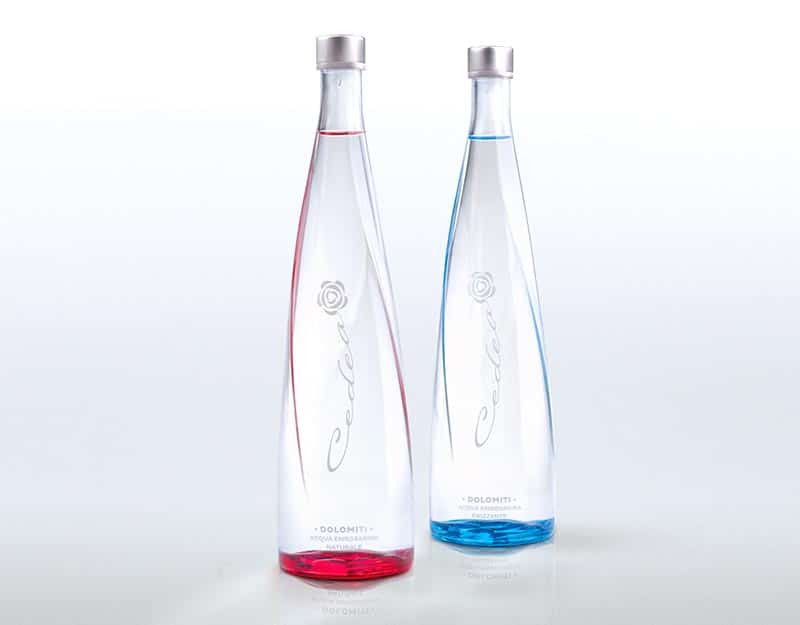
The Cedea spring is also unique in another aspect — the water just spurts out from a rock fracture filtrated and enriched with minerals by the dolomite rocks. The brand does nothing more than produce bottles by recycling glass and filling these bottles at the source. It’s an eco-friendly, sustainable, and carbon-neutral way of water collection.
Despite its spring being out in the open, the quality of the water is exceptionally consistent. When it emerges, it has a temperature of 6.9°C, a pH of 8.1, and 130 mg/L of total dissolved solids. Its calcium (30.1 mg/L) and silica (9.67 mg/L) content give it a distinct taste since the former is known for its bitterness and the latter for its smoothness.
Thanks to that, Cedea has received many taste awards and is considered the perfect diluter for whiskey tasting. You can head to the brand’s website to see the complete list of rewards it boasts.
Cedea distributes its premium drinking water only in classy glass bottles. Their philosophy of not using plastics fortifies the brand’s eco-friendly status.
Ferrarelle
Our last pick, Ferrarelle, is the only brand we’re reviewing that is not from northern Italy. It originates from a more southern territory, Campania, and its spring is located within the borders of Riardo Springs Park.
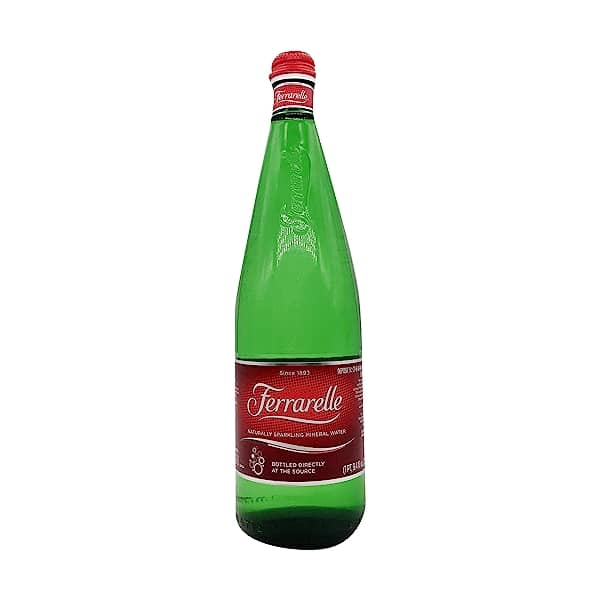
The water comes from the rain poured by clouds that occasionally gather over the dormant volcano of Roccamonfina. The rainwater travels 15-kilometer-long (9.32 miles) layers of porous carbonate and volcanic rocks for about 30 years.
During this journey, it’s purified by the absorptive and adsorptive properties of the said geological formations. These formations also endow it with a rich mineral body. The most notable ingredients of the end product are its 1,315 mg/L of total dissolved solids, 401 mg/L of calcium, and 49 mg/L of potassium.
Before the water emerges to the surface, it also meets carbon dioxide gas. So, it has natural carbonation, as confirmed by its Natural Effervescence Process certificate.
Similar to Cedea, Ferrarelle doesn’t need to engage in any water collection activities (like drilling an artesian well) because the water bursts forth through a geyser in the most extraordinary fashion — ready to be consumed.
Like San Pellegrino and Lauretana, Ferrarelle is naturally acidic with a pH value of 6.
Bottled Water from Other Countries
Enjoyed Italian bottled water? You’ll also love bottled water from the following countries:
